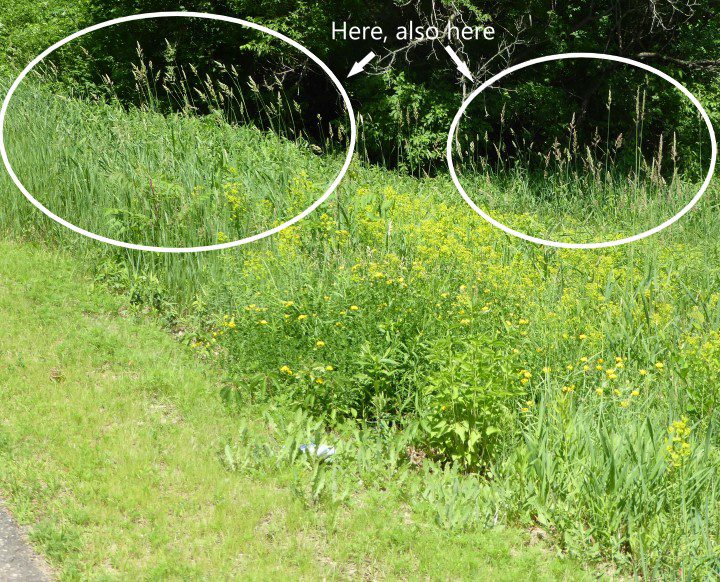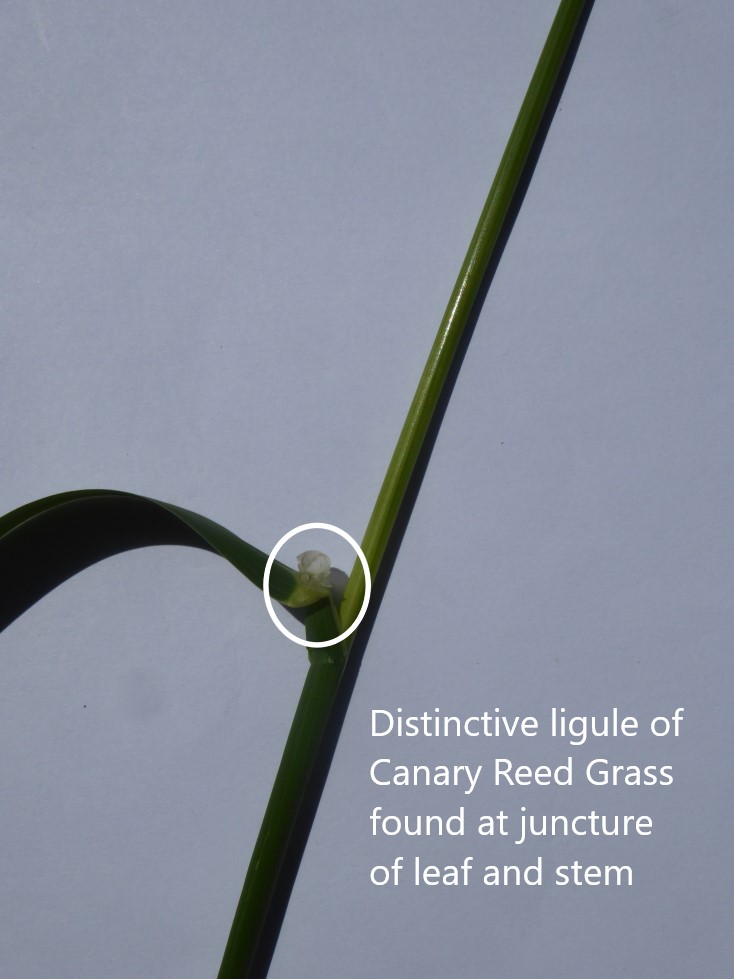Reed Canary Grass, Phalaris arundinacea

This is a plant you want to know to attack quickly if it shows up in your raingarden. I’ve seen it invade dry boulevards where the owner thought it was just a desirable showy grass. This grass is nearly impossible to eradicate in extensive mats. If you see it blooming anywhere, harvest the flowers to prevent seed from maturing. Minnesota DNR classifies it as an ecological threat.
You can kill it with a 20% acetic acid (vinegar) solution. Household products contain <5%. We have not found it locally. Order it online, in one-gallon jugs, and spray at full strength. The dying plants will succumb quickly, but then you need to watch for seedlings. Monitor the area for at least three years. Solarization with a cover of black poly will kill seed on the surface as well as mature plants. This takes a full season of heat and no water. Just be careful to go beyond the existing clump, as it spreads by creeping rhizomes as well as seed.
 I plan to experiment with using native prairie cordgrass (Spartina pectinata) to see if it will outcompete reed canary grass, but the native gets 6–10’ tall. Perhaps it can be a privacy hedge if you have the space. The native can also handle heavy flow in bioswales coming from parking lot pavement. Add other tall species to help hold it upright, e.g., big bluestem, gray-headed coneflower, meadow blazing star.
I plan to experiment with using native prairie cordgrass (Spartina pectinata) to see if it will outcompete reed canary grass, but the native gets 6–10’ tall. Perhaps it can be a privacy hedge if you have the space. The native can also handle heavy flow in bioswales coming from parking lot pavement. Add other tall species to help hold it upright, e.g., big bluestem, gray-headed coneflower, meadow blazing star.
Reed canary grass is easy to see at a glance. Bonus points for anyone who can identify the yellow/green blooming invasive plant in the foreground. Reed canary will get chest- to shoulder-high, even higher with more water available.
The good news is that we can identify it from a distance, and when looking closer see a distinctive diagnostic trait: it has a papery ligule (where the leaf attaches to stalk) that stands up 3 mm or ~ ¼”. This is the only grass with such prominent ligules.
– Douglas Owens-Pike, Metro Blooms Sustainable Landcare Expert

